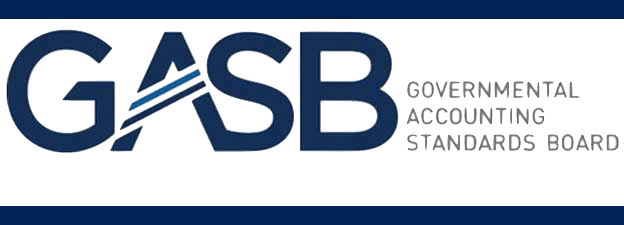A Net Tangible Assets (NTA) appraisal is a precise financial evaluation that focuses exclusively on a company's physical, measurable assets while excluding intangible elements like intellectual property or brand reputation. This specialized valuation methodology provides a clear snapshot of a business's concrete economic value by systematically assessing and quantifying tangible resources.
The process involves a comprehensive examination of physical assets such as real estate, machinery, equipment, inventory, and other concrete resources that can be physically touched or measured. Unlike broader valuation approaches, an NTA appraisal strips away complex financial constructs to reveal the fundamental physical worth of a business's core assets.
Critical to this assessment is the meticulous identification and valuation of each tangible asset, followed by a careful subtraction of associated liabilities. This approach creates a transparent representation of net physical value, calculated by subtracting total liabilities from total tangible assets. The resulting figure offers stakeholders an unambiguous understanding of a company's physical asset base.
Professionals typically conduct these appraisals using rigorous methodologies that include detailed asset inventories, current market value assessments, and comprehensive liability analyses. The goal is to provide an objective, data-driven evaluation that reflects the genuine physical economic value of an organization's resources.
By focusing solely on tangible assets, this appraisal method offers a straightforward, no-nonsense approach to understanding a company's physical worth, making it an invaluable tool for financial decision-makers, investors, and strategic planners seeking clear, concrete insights into an organization's fundamental economic foundation.
Net Tangible Assets (NTA) appraisals require specialized professionals with distinct areas of expertise. These professionals contribute unique skills to accurately assess a company's physical assets across various industries and asset types.
General business appraisers provide broad evaluations, typically holding certifications from professional organizations like the American Society of Appraisers (ASA). They assess comprehensive asset portfolios, including real estate, machinery, and inventory, offering holistic valuation perspectives.
Real estate appraisers concentrate specifically on property valuation, employing specialized methodologies to determine market values for land, buildings, and physical structures. Their expertise is particularly critical for organizations with significant real estate holdings, such as property management firms and real estate investment trusts.
Equipment appraisers focus exclusively on machinery and industrial assets. Their deep understanding of industry standards and depreciation rates enables precise valuations for complex mechanical and technological assets across manufacturing, transportation, and technological sectors.
Inventory appraisers specialize in quantifying the value of goods held by businesses. They utilize advanced accounting techniques like FIFO and LIFO to provide accurate representations of current inventory worth, which is essential for financial reporting and strategic planning.
Specialized appraisers in niche sectors, such as marine and aviation, offer targeted expertise for unique asset classes. These professionals evaluate complex assets like vessels and aircraft, considering nuanced factors including age, condition, technological capabilities, and current market trends.
Each appraiser type brings distinctive skills to the net tangible assets valuation process, ensuring comprehensive and accurate asset assessments tailored to specific business needs.
Net Tangible Assets (NTA) appraisals offer comprehensive insights into a company's physical asset valuation, delivering critical financial intelligence across multiple strategic domains. These assessments provide precise documentation of tangible assets like property, equipment, and inventory, enabling organizations to make informed decisions with confidence.
Tax compliance represents a primary motivation for securing an NTA appraisal. Accurate valuations facilitate legitimate tax deductions, substantiate asset donation claims, and ensure regulatory alignment. Financial institutions and tax authorities rely on meticulously documented asset values to validate reporting and assess organizational financial health.
Business transactions such as mergers, acquisitions, and financing opportunities critically depend on reliable asset valuation. Potential investors and lenders require transparent, objective assessments of tangible assets to evaluate organizational worth and potential collateral value. An NTA appraisal establishes a credible foundation for negotiation and financial planning.
Legal scenarios frequently demand precise asset documentation. During shareholder disputes, divorce proceedings, or regulatory compliance investigations, an impartial NTA appraisal provides an authoritative reference point for asset division and financial transparency. The objective valuation helps mitigate potential conflicts and ensures equitable resolution.
Insurance protection represents another crucial consideration. Accurate NTA appraisals enable businesses to secure appropriate coverage levels, preventing potential under or over-insurance. By establishing exact asset values, organizations can design insurance strategies that comprehensively protect their physical resources without unnecessary financial exposure.
Estate planning and business succession strategies also benefit significantly from comprehensive NTA appraisals. Precise asset valuations facilitate equitable inheritance distribution, minimize potential tax liabilities, and provide clear financial guidance for future generations or potential business transitions.
Ultimately, a Net Tangible Assets appraisal transcends mere financial documentation. It represents a strategic tool for comprehensive organizational management, risk mitigation, and informed decision-making across financial, legal, and operational domains.
Online Net Tangible Assets appraisals have become increasingly prevalent, offering a convenient and efficient alternative to traditional in-person evaluations. Modern appraisal methodologies now incorporate sophisticated digital tools that enable comprehensive asset assessments without physical presence.
Clients can submit detailed documentation, high-resolution photographs, and asset specifications through secure digital platforms. Certified appraisers leverage advanced technological capabilities to analyze these materials with precision, ensuring a thorough and accurate valuation process. The digital submission allows for comprehensive review and expert analysis, maintaining the same rigorous standards as traditional appraisal methods.
Interactive online appraisal sessions have also emerged as an effective approach. Using video conferencing technologies, appraisers can conduct live consultations, enabling real-time discussion and immediate clarification of asset details. This approach facilitates direct communication, ensuring that nuanced aspects of the assets are fully understood and appropriately evaluated.
Professional online appraisals adhere strictly to established industry standards, including the Uniform Standards of Professional Appraisal Practice (USPAP). Experienced appraisers meticulously review submitted materials, cross-referencing documentation and engaging in detailed client conversations to verify asset characteristics and value.
The digital approach offers significant advantages, including reduced logistical complexity, faster turnaround times, and enhanced accessibility. Clients can now receive expert valuation services efficiently, without geographical constraints or extensive scheduling challenges.
While online appraisals provide remarkable convenience, the fundamental principles of thorough, professional assessment remain unchanged. The quality of the appraisal depends on the expertise of the appraiser and the comprehensiveness of the submitted information.
What Are Net Tangible Assets and Why Do They Matter?
Net tangible assets (NTA) represent the total value of a company's physical assets minus its liabilities. This metric provides a critical snapshot of a company's financial health, offering insights into its fundamental asset base beyond intangible assets like goodwill, patents, or trademarks.
Components of Net Tangible Assets
NTA is calculated by examining two key elements:
Tangible Assets Include:
- Real property (buildings, land, equipment)
- Inventory
- Cash and cash equivalents
- Accounts receivable
Liabilities Subtracted Include:
- Short-term debts
- Long-term financing obligations
- Current payables
- Outstanding loans
Why Net Tangible Assets Matter
- Valuation Accuracy: Provides a clear view of a company's fundamental financial standing beyond market perception
- Financial Stability Assessment: Reveals the concrete asset base a company can leverage during economic challenges
- Investment Decision Support: Helps investors understand a company's true underlying value
- Risk Mitigation Indicator: Demonstrates a company's ability to withstand financial pressures
Understanding net tangible assets enables more informed financial analysis, offering a transparent view of a company's core economic strength and potential resilience.
The Strategic Value of Precise NTA Valuation
Net Tangible Assets (NTA) appraisal is a critical process that provides stakeholders with a comprehensive understanding of a company's physical asset value. Unlike basic asset calculations, a precise NTA valuation offers deep insights into organizational financial health and operational efficiency.
Key Benefits of Accurate NTA Valuation
- Strategic Decision-Making Support
A comprehensive NTA appraisal delivers essential data that empowers business leaders to make informed choices about:
- Potential mergers and acquisitions
- Organizational restructuring
- Strategic investment planning
- Financial Reporting Precision
Accurate NTA valuations are crucial for:
- Ensuring compliance with accounting standards
- Providing transparent financial statements
- Maintaining regulatory reporting integrity
- Comprehensive Risk Assessment
Detailed NTA appraisals enable stakeholders to evaluate:
- Asset liquidity potential
- Potential cash conversion scenarios
- Overall organizational financial resilience
- Operational Performance Optimization
In-depth NTA analysis helps businesses:
- Identify underperforming assets
- Optimize resource allocation
- Make strategic capital investment decisions
Strategic Significance
A precise NTA valuation transcends mere numerical assessment, serving as a critical tool for comprehensive business strategy. By providing transparent, detailed insights into tangible asset value, organizations can enhance financial planning, mitigate risks, and create pathways for sustainable growth.
The true value of NTA appraisal lies in its ability to transform raw data into actionable intelligence, enabling businesses to make forward-thinking decisions that drive long-term success.
Breaking Down the Components of Net Tangible Assets
Understanding the Core Components of Net Tangible Assets
Net Tangible Assets (NTA) represent the physical and financial resources a company owns that can be readily converted into cash, excluding intangible assets like patents or trademarks. This comprehensive appraisal process is critical for evaluating a company's financial foundation.
Defining Tangible Assets
Tangible assets are physical resources that provide substantial value to a company, including:
- Property and Real Estate: Operational facilities and investment properties
- Equipment and Machinery: Production tools, vehicles, and operational machinery
- Inventory: Finished goods, work-in-progress, and raw materials ready for sale or manufacturing
Calculating Net Tangible Assets
The NTA calculation follows a straightforward formula:
NTA = Total Assets - Total Liabilities - Intangible Assets
This precise calculation provides a clear snapshot of a company's tangible financial position, stripping away non-physical value representations.
Strategic Significance of NTA Appraisal
Different stakeholders rely on NTA for critical insights:
- Investors: Gain transparent understanding of the company's concrete financial substance
- Creditors: Assess risk levels for potential loan approvals
- Management: Support strategic planning during mergers, acquisitions, or business restructuring
Key Factors Influencing NTA Valuation
Multiple dynamic elements impact Net Tangible Assets, including:
- Current market conditions
- Asset depreciation rates
- Fluctuations in inventory levels
- Technological obsolescence
Regular and thorough appraisals ensure stakeholders maintain an accurate, up-to-date understanding of a company's tangible asset landscape. This ongoing assessment promotes financial transparency, supports informed decision-making, and builds stakeholder confidence.
How Does NTA Appraisal Differ from Traditional Valuation Methods?
Net Tangible Assets (NTA) appraisal represents a specialized valuation methodology that fundamentally differs from traditional financial assessment approaches. This method provides a precise and realistic evaluation of a company's physical and financial resources.
Key Distinguishing Characteristics
- Asset Concentration: Exclusively focuses on tangible, measurable assets such as:
- Cash and cash equivalents
- Physical inventory
- Machinery and equipment
- Real estate holdings
- Valuation Perspective: Prioritizes concrete, quantifiable resources over speculative or intangible value propositions
Primary Advantages of NTA Appraisal
- Financial Transparency
NTA appraisal eliminates the ambiguity associated with traditional valuation methods by providing a clear, immediate snapshot of a company's actual asset value.
- Conservative Estimation
Unlike methods that rely on projected earnings or market speculation, NTA appraisal grounds its assessment in current, verifiable asset values.
- Reliability in Challenging Scenarios
Particularly valuable during:
- Company liquidation processes
- Bankruptcy evaluations
- Mergers and acquisitions
- Comprehensive financial restructuring
Regulatory and Compliance Considerations
NTA appraisal aligns with strict accounting standards, including GAAP and IFRS, ensuring:
- Accurate financial reporting
- Transparent asset documentation
- Verifiable valuation methodologies
Strategic Implications
By providing a rigorous, asset-focused valuation approach, NTA appraisal empowers stakeholders with critical insights into a company's genuine financial standing, facilitating more informed decision-making processes.
Navigating the NTA Appraisal: A Step-by-Step Approach
Understanding Net Tangible Assets Appraisal
Net Tangible Assets (NTA) appraisal is a critical process for evaluating a company's core operational value. This comprehensive approach provides stakeholders with a clear understanding of a business's physical asset worth.
Step 1: Comprehensive Asset Identification
Begin by meticulously documenting all tangible assets, including:
- Real Estate: Buildings, land, and property improvements
- Equipment: Operational machinery, vehicles, and physical tools
- Inventory: Raw materials, work-in-progress, and finished goods
- Cash and Liquid Assets: Readily accessible financial resources
Step 2: Precise Market Value Assessment
Determine the fair market value of each identified asset through:
- Comprehensive market research
- Comparative sales analysis
- Current industry valuation standards
- Objective assessment of asset condition and utility
Step 3: Liability Evaluation
Conduct a thorough examination of all financial obligations, including:
- Outstanding loans
- Accounts payable
- Long-term financial commitments
- Current and projected debt responsibilities
Step 4: Precise NTA Calculation
Apply the straightforward calculation:
Net Tangible Assets = Total Tangible Assets - Total Liabilities
Step 5: Rigorous Verification Process
Ensure accuracy through:
- Cross-referencing with financial statements
- Detailed asset documentation review
- Potential consultation with financial experts
- Comprehensive validation of all numerical inputs
While the NTA appraisal process requires meticulous attention to detail, it provides invaluable insights into a company's fundamental financial standing. By following these systematic steps, stakeholders can develop a robust understanding of a business's tangible asset value.
Critical Factors Influencing Net Tangible Asset Valuation
Critical Factors Influencing Net Tangible Asset Valuation
Net tangible assets (NTA) appraisal is a comprehensive process that provides businesses and investors with a nuanced understanding of the true value of physical resources. Multiple critical factors intersect to create a holistic valuation approach.
Key Valuation Determinants
- Asset Condition and Age
- Physical state directly impacts asset value
- Newer assets typically retain higher value due to:
- Enhanced longevity
- Superior operational efficiency
- Older or damaged assets require depreciation adjustments
- Market Demand Dynamics
- Current market interest significantly influences asset valuation
- Technological assets particularly susceptible to rapid value fluctuations
- Appraisers must analyze:
- Current market trends
- Buyer interest levels
- Industry-specific demand curves
- Replacement Cost Analysis
- Evaluates expense of replacing an asset with an equivalent item
- Considers current market conditions
- Provides buyers with realistic investment perspectives
- Economic Environment Considerations
- Economic indicators directly impact asset values
- Key factors include:
- Inflation rates
- Interest rates
- Overall economic stability
- Economic cycles create value fluctuations
- Regulatory and Compliance Landscape
- Legal frameworks influence asset valuation
- Compliance requirements include:
- Local regulations
- State guidelines
- Federal statutory requirements
- Non-compliance can result in:
- Reduced asset values
- Potential legal risks
Understanding these interconnected factors enables more precise and reliable net tangible asset appraisals, accounting for the complex dynamics of asset valuation across various market conditions.
Real-World Applications of NTA Appraisals
Real-World Applications of NTA Appraisals
Net Tangible Assets (NTA) appraisals provide critical insights into a company's physical asset value, playing a strategic role across multiple business domains. These assessments go far beyond basic accounting, offering comprehensive value analysis in several key areas.
Financial Reporting Transparency
- Enables businesses to present a clear view of asset base on balance sheets
- Enhances investor and stakeholder understanding of physical asset value
- Particularly crucial in asset-intensive industries like manufacturing and real estate
Mergers and Acquisitions Support
- Critical for determining fair purchase prices
- Helps acquiring companies understand precise tangible asset worth
- Prevents potential overvaluation that could impact share prices
- Supports more informed investment decision-making
Tax and Compliance Considerations
- Assists in accurate property tax assessments
- Supports comprehensive estate planning strategies
- Identifies potential tax optimization opportunities through depreciation claims
- Ensures regulatory compliance in asset valuation
Investment Analysis Framework
- Enables investors to evaluate a company's market position
- Compares tangible asset base to overall market capitalization
- Provides risk assessment metrics for potential investments
- Offers insights into company's intrinsic financial health
NTA appraisals represent a sophisticated approach to understanding organizational value. By providing a detailed examination of tangible assets, these assessments support strategic decision-making, financial transparency, and long-term business planning across diverse industry landscapes.
Overcoming Challenges in Net Tangible Asset Assessment
Navigating the Complexities of Net Tangible Asset Valuation
Assessing net tangible assets (NTA) involves intricate challenges that require strategic approaches and deep understanding. These physical, observable assets form a critical component of a company's financial landscape, demanding precision and expertise in valuation.
Key Challenges in Net Tangible Asset Assessment
- Accurate Physical Asset Valuation
- Account for wear and tear
- Address technological obsolescence
- Manage market fluctuations
- Utilize multiple valuation methods:
- Cost approach
- Market approach
- Income approach
- Inventory Valuation Complexity
- Choose appropriate valuation method:
- FIFO (First-In, First-Out)
- LIFO (Last-In, First-Out)
- Weighted Average
- Manage impact of market price variations
- Implement robust inventory management systems
- Depreciation Calculation Challenges
- Develop consistent depreciation methodologies
- Conduct regular schedule reviews
- Prevent valuation discrepancies
- Economic Environment Considerations
- Monitor market conditions
- Track regional economic variations
- Understand industry-specific trends
- Adjust valuations to reflect current economic realities
- Regulatory and Compliance Navigation
- Stay current with accounting standards
- Understand legal requirements
- Maintain assessment credibility
Strategic Approach to Overcoming Valuation Challenges
Successfully addressing these challenges requires a comprehensive, systematic approach. By integrating rigorous methodologies, staying informed about market dynamics, and maintaining meticulous documentation, businesses can develop more accurate and reliable net tangible asset assessments.
The key lies in adopting a holistic perspective that combines technical expertise, analytical rigor, and adaptive strategies. This approach ensures that net tangible asset valuations reflect the true economic value of a company's physical resources.
Expert Strategies for Accurate NTA Valuation
Comprehensive Approach to Net Tangible Assets Valuation
Achieving precise Net Tangible Assets (NTA) appraisal requires a methodical and strategic approach. The following expert strategies ensure comprehensive and accurate valuation:
1. Comprehensive Asset Inventory
- Conduct a detailed documentation of all physical assets
- Include real estate, machinery, equipment, and inventory
- Record specific details about asset condition, usage, and operational value
- Categorize assets by type, age, and functional capacity
2. Precise Market Value Assessment
- Research current market trends and comparable asset sales
- Analyze pricing dynamics within specific industry sectors
- Compare asset characteristics to establish objective valuation benchmarks
- Consider regional and economic factors influencing asset values
3. Sophisticated Depreciation Analysis
- Evaluate asset depreciation through multiple methodological lenses
- Consider technological obsolescence and functional wear
- Apply appropriate depreciation methods:
- Straight-line depreciation
- Declining balance method
- Sum-of-years-digits approach
- Track cumulative depreciation impact on asset value
4. Rigorous Documentation and Compliance
- Maintain comprehensive appraisal documentation
- Record all calculation methodologies
- Preserve detailed data source references
- Ensure alignment with industry valuation standards
5. Professional Expertise Integration
- Collaborate with specialized asset valuation professionals
- Leverage expert insights for complex asset assessments
- Validate appraisal methodologies through third-party consultation
- Enhance valuation integrity through professional perspectives
6. Continuous Valuation Monitoring
- Implement periodic asset value reviews
- Adapt valuations to evolving market conditions
- Track technological and economic shifts
- Maintain real-time understanding of asset worth
By integrating these strategic approaches, organizations can develop a nuanced and dynamic understanding of their net tangible assets, facilitating more informed financial decision-making and strategic planning.
Compliance and Regulatory Landscape for NTA Appraisals
Navigating the compliance and regulatory landscape for Net Tangible Assets (NTA) appraisals is critical for maintaining financial integrity and transparency. A comprehensive understanding of the regulatory framework helps businesses and investors ensure accurate reporting and minimize potential risks.
Key Regulatory Frameworks
- International Financial Reporting Standards (IFRS)
- Generally Accepted Accounting Principles (GAAP)
These industry-standard frameworks mandate precise asset reporting and valuation, requiring organizations to reflect the true market value of their tangible assets through regular, comprehensive appraisals.
Oversight and Regulatory Bodies
Several key organizations play crucial roles in maintaining appraisal standards:
- Financial Accounting Standards Board (FASB): Establishes and enforces standards for asset evaluation
- Securities and Exchange Commission (SEC): Mandates public company asset disclosure
Compliance Considerations
Jurisdictional Variations
Businesses must recognize that compliance requirements can vary significantly across:
- Federal regulations
- State-specific laws
- Local property assessment guidelines
- Environmental regulations
Potential Risks of Non-Compliance
Inaccurate NTA appraisals can result in:
- Financial misstatements
- Legal complications
- Reputational damage
- Potential financial penalties
Best Practices
To successfully navigate the complex regulatory landscape, organizations should:
- Engage qualified and experienced appraisers
- Stay current with evolving regulatory standards
- Maintain comprehensive documentation
- Conduct regular internal reviews
Proactive management of NTA appraisal compliance not only ensures regulatory adherence but also builds stakeholder confidence and supports strategic financial decision-making.
Unlocking Financial Insights Through NTA Analysis
Understanding the Foundations of Net Tangible Assets
Net Tangible Assets (NTA) appraisal represents a critical financial analysis technique that offers businesses and investors a comprehensive view of a company's core financial strength. By focusing on physical and quantifiable assets, NTA provides a clear picture of a company's fundamental value beyond intangible elements.
Defining Net Tangible Assets
NTA is calculated by subtracting intangible assets and liabilities from a company's total tangible assets. This approach zeroes in on:
- Physical property and equipment
- Inventory and stock
- Cash and financial instruments
- Real estate holdings
Strategic Importance of NTA Analysis
The significance of NTA appraisal extends across multiple financial domains:
- Financial Transparency: Provides a clear, objective view of a company's core asset value
- Investment Decision Making: Enables more accurate valuation for potential investors
- Risk Management: Helps identify potential vulnerabilities in asset composition
- Regulatory Compliance: Ensures accurate financial reporting standards
Key Evaluation Considerations
When conducting an NTA appraisal, professionals typically examine:
- Current market value of physical assets
- Depreciation and asset aging
- Potential liquidation value
- Asset condition and functional utility
Critical Applications
NTA appraisal proves invaluable in various financial scenarios, including:
- Mergers and acquisitions
- Bankruptcy proceedings
- Estate planning
- Loan and financing assessments
- Partnership evaluations
In today's dynamic financial landscape, a comprehensive understanding of net tangible assets provides businesses with a strategic advantage, offering clarity, transparency, and insights into true organizational value.
Your NTA Appraisal Questions Answered
Understanding Net Tangible Assets Appraisal
Net Tangible Assets (NTA) appraisal is a critical financial assessment that provides deep insights into a company's concrete financial foundation. By systematically evaluating physical assets and subtracting liabilities, businesses gain a clear perspective of their intrinsic value.
Key Components of Net Tangible Assets
- Physical properties
- Equipment and machinery
- Inventory
- Cash and marketable securities
- Tangible financial assets
Purpose and Significance
An NTA appraisal serves multiple strategic purposes:
- Provides transparent financial evaluation
- Supports investment decision-making
- Facilitates loan applications
- Assists in merger and acquisition processes
- Enables precise strategic planning
Comprehensive Appraisal Methodology
Professional appraisers employ multiple sophisticated valuation approaches:
- Cost Approach: Assesses replacement or reproduction value of assets
- Market Approach: Compares assets against similar market benchmarks
- Income Approach: Evaluates potential revenue generation from assets
Critical Influencing Factors
Multiple variables impact Net Tangible Asset valuation:
- Current market conditions
- Asset age and condition
- Technological obsolescence
- Geographic location
- Industry-specific economic trends
Recommended Appraisal Frequency
While timing varies, businesses should consider NTA appraisals:
- Annually for consistent financial tracking
- During significant operational changes
- Prior to major financial transactions
- When preparing for potential investments or acquisitions
A professional, comprehensive NTA appraisal transforms complex financial data into actionable strategic insights, empowering businesses to make informed decisions.









.avif)




.svg)















